Lamp Treatment: A New Perspective on Mental Wellness
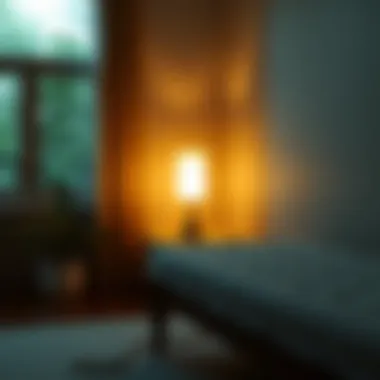
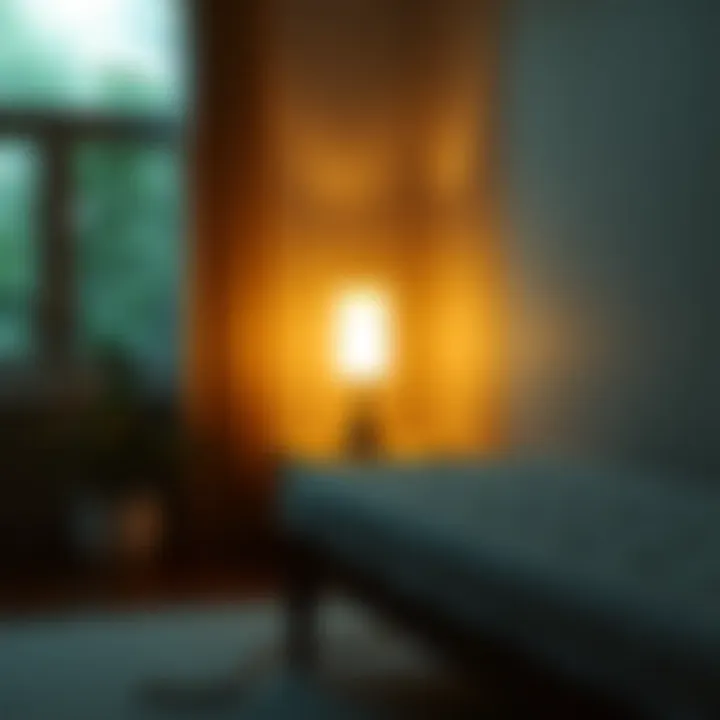
Intro
In recent years, mental health has taken center stage in discussions about overall well-being. With escalating stress levels and rising rates of mental health disorders, it's crucial to seek out innovative approaches to personal wellness. One such method gaining traction is lamp treatment, a form of light therapy designed to promote mental health benefits. This article will uncover the intriguing aspects of lamp treatment, detailing its applications and potential benefits for those navigating the complexities of psychological health.
Understanding Mental Health and Well-being
What is Mental Health?
At its core, mental health refers to cognitive, emotional, and social well-being. It's not merely the absence of mental illness but rather a state where individuals can effectively cope with daily stresses, engage in work productively, and contribute to their community. Many factors influence mental health, including genetic predispositions, environmental factors, and lifestyle choices.
The Importance of Prioritizing Mental Well-being
In a fast-paced world where responsibilities mount, prioritizing one’s mental well-being becomes imperative. Many people find themselves stretched thin, juggling various obligations, leaving little room for self-care.
Neglecting mental health can lead to feelings of discontent, anxiety, and depression. As the saying goes, "You can’t pour from an empty cup"—meaning that maintaining mental wellness is essential not just for oneself but also for those who rely on us. Research shows that good mental health correlates strongly with better physical health, creating a ripple effect positively impacting every facet of life.
Common Mental Health Challenges and Disorders
Mental health disorders manifest in various shapes and forms, affecting individuals in unique ways. Some of the more common conditions include:
- Anxiety disorders: Chronic worry that can interfere with daily activities.
- Depression: Persistent feelings of sadness that can make daily functioning a challenge.
- Bipolar disorder: Characterized by extreme mood swings that can disrupt a person’s life.
- PTSD: Following traumatic events, individuals may experience anxiety and flashbacks.
Understanding these challenges can equip individuals with the necessary tools to seek help or find solutions that work for them, including exploring alternative therapies, like lamp treatment.
Strategies for Improving Mental Health
Self-care Techniques and Practices
The foundation of managing mental health effectively revolves around self-care. Engaging in hobbies, exercising regularly, and setting aside time for yourself can make a world of difference. Even simple practices like maintaining a consistent sleep schedule or taking a warm bath can significantly enhance mood and well-being.
Building Resilience and Stress Management
Life throws curveballs, and how we respond can greatly impact our mental health. Building resilience— the ability to bounce back from setbacks—can be fostered through mindset shifts. Techniques such as reframing negative thoughts or embracing constructive feedback are powerful tools in navigating life's ups and downs.
Seeking Professional Help: Therapy and Counseling
When self-care alone isn't cutting it, turning to professional help can provide much-needed guidance. Therapies such as Cognitive Behavioral Therapy (CBT) can offer robust strategies for counteracting harmful thought patterns. Websites like Psychology Today provide directories to find licensed therapists suitable for specific needs.
Finding Balance in Life
Healthy Lifestyle Choices: Diet, Exercise, and Sleep
What we consume directly influences our mental state. Eating a balanced diet, engaging in physical activity, and ensuring sufficient sleep are cornerstones of solid mental health. Nutritional psychiatry, an emerging field, suggests that gut health and mental health are closely linked.
Mindfulness and Meditation Practices
In today’s hectic world, mindfulness practices have gained attention for centering the mind and reducing anxiety. Incorporating meditation, deep breathing exercises, or even gentle yoga can help calm racing thoughts. Apps like Headspace or Calm offer valuable resources for beginners in this area.
Setting Boundaries and Managing Time Effectively
Finding your footing when it comes to time management can improve both productivity and mental health. Learning to say no or understanding when to delegate tasks can free up time for personal pursuits and reduce the likelihood of burnout.
Enhancing Personal Development
Goal Setting and Productivity Tips
Establishing clear and achievable goals can foster a sense of accomplishment and direction in life. Using the SMART criteria—Specific, Measurable, Achievable, Relevant, and Time-bound—can be a useful framework to stay on track.
Building Healthy Relationships and Social Connections
Human beings are social creatures. Nurturing relationships can buffer against stress and provide needed support. Feeling connected to others enhances a sense of community and belonging, both of which are protective factors for mental health.
Practicing Gratitude and Positivity
Embracing an attitude of gratitude can shift perspectives, allowing individuals to focus on what they have rather than what they lack. Journaling daily about positive experiences or things one is grateful for can foster a more optimistic outlook on life.
Tips for Maintaining Mental Well-being
Strategies for Preventing Burnout
Burnout is a state of emotional, physical, and mental exhaustion caused by prolonged stress. Recognizing early signs is key to mitigating its effects. Regular breaks, self-assessment of workload, and setting realistic goals can be effective strategies.
Coping with Challenges and Setbacks
Life is full of uncertainties and, at times, tumultuous challenges. How we cope with these setbacks largely dictates our mental health. Embracing flexibility, practicing self-compassion, and seeking support when needed can be advantageous during tough times.
Creating a Supportive Environment
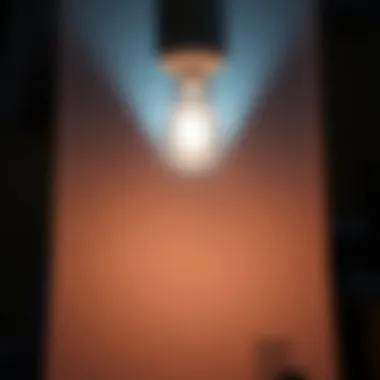
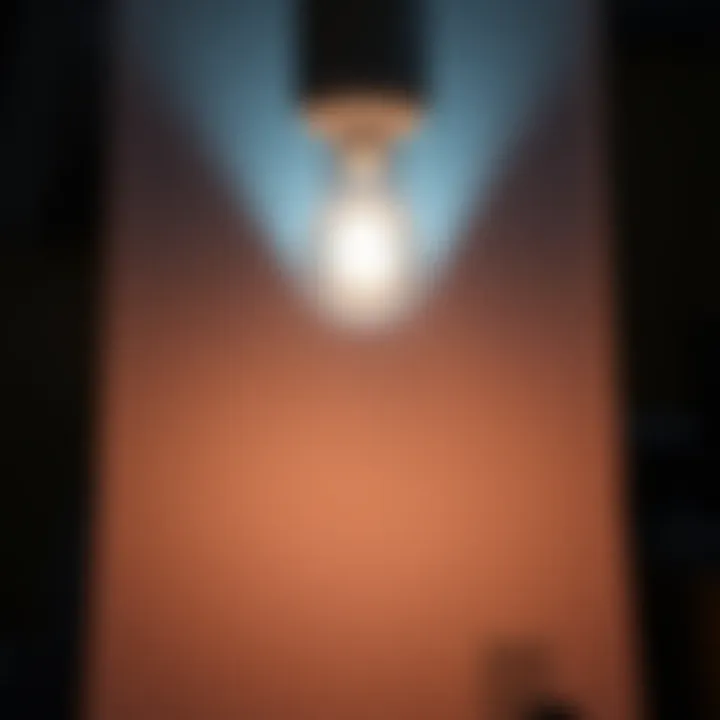
Surrounding oneself with positive influences can greatly benefit mental well-being. This can include friends, family, or even professional networks. Creating a space—both physically and emotionally—that promotes well-being is crucial.
Prologue to Lamp Treatment
In today’s rapidly evolving world, mental health has come to the forefront of health conversations. People are searching for methods beyond traditional approaches, prompting the exploration of innovative treatments like lamp therapy. As society increasingly recognizes the influence of light on well-being, understanding lamp treatment becomes essential for anyone interested in enhancing their mental health. Its significance lies not only in the science behind it but also in its practical applications for everyday individuals.
When we talk about lamp treatment, we refer to a therapeutic method that harnesses the power of light to promote mental wellness. This approach aims to alleviate symptoms related to conditions such as Seasonal Affective Disorder (SAD), insomnia, and even anxiety. Therefore, the potential benefits are multi-faceted and significant, affecting not only mood states but overall quality of life.
Exploring this treatment opens a window into the ways light can provide relief and healing. Individuals seeking to optimize their mental health may find that lamp treatment serves as a valuable addition to their wellness toolkit.
Defining Lamp Treatment and Its Purpose
Lamp treatment refers to the use of specially designed lights that emit certain wavelengths beneficial for psychological well-being. The primary purpose of this method lies in its ability to improve mood and regulate biological rhythms via exposure to light mimicking natural sunlight. Many find this therapy particularly useful during seasons when natural light is scarce. In essence, it acts like Mother Nature's remedy, stepping in to balance the absence of sunlight in our environments.
History of Light Therapy
The journey of light therapy is not a new concept; it stretches back several centuries. As researchers and healthcare practitioners begin to acknowledge its benefits, the evolution of light therapy has been fascinating, particularly in how it adapts to societal changes and scientific advancements.
Early Uses of Light
In ancient cultures, sunlight was viewed as a source of vitality. Egyptians, Greeks, and Romans harnessed light’s warmth, believing it had healing properties. They engaged in practices such as sunbathing or utilizing reflective surfaces to capture sunlight, which reflects an early understanding of light’s impact on human health. These early uses underscore that light was not merely functional but also symbolic—a bridge between the physical and spiritual realms.
Development Over the Decades
As the centuries rolled on, light therapy went through significant transformations, particularly in the 20th century. The advent of technology paved new ways for this treatment. For instance, the introduction of electric lamps allowed for more controlled exposure and reliability, making therapy more accessible to a broader audience. The goal remained the same but with enhanced methods for application, showing the persistent adaptability of lamp treatment practices throughout time.
Scientific Recognition
Science began to genuinely elucidate the mechanisms behind light therapy, particularly during the late 20th century. A growing body of research provided evidence supporting its efficacy, leading to greater acceptance within clinical settings. This has made lamp treatment not just a fringe or alternative method but a recognized therapeutic tool. Its incorporation into mental health care strategies signals progress and provides credibility to what was once viewed as unconventional. Furthermore, scientific recognition fosters more extensive studies aiming to refine techniques and broaden understanding, propelling lamp treatment into mainstream health discussions.
The exploration of lamp treatment reveals how far light therapy has come and emphasizes its role in contemporary wellness practices. Understanding this history sheds light on its significance in ongoing mental health narratives.
The Science Behind Light Therapy
Understanding the science behind light therapy is crucial in grasping how lamp treatment can positively affect mental health. This section will illuminate the biological mechanisms at play, alongside the specific types of light that are harnessed for therapeutic purposes. By knowing how these aspects interplay, one can appreciate the broader implications of lamp treatment in improving well-being.
Biological Mechanisms
Effect on Melatonin Production
Melatonin is often referred to as the body's natural sleep hormone. It's produced in response to darkness and helps regulate sleep-wake cycles. When it comes to lamp treatment, exposure to bright light—especially in the morning—can aid melatonin production regulation. This is vital for maintaining a healthy circadian rhythm, which can often be disrupted in those suffering from seasonal affective disorder or insomnia.
The key characteristic here is that light therapy helps reset the body's internal clock. This makes it a popular choice because many individuals struggle with sleep issues due to irregular or insufficient melatonin levels. The unique feature is that the right kind of light exposure can incrementally adjust melatonin levels, providing a non-pharmaceutical way to address sleep disturbances. However, overexposure or incorrect timing can result in unwanted disturbances, so guidance on usage is often advised.
Impact on Serotonin Levels
Serotonin, known as the "feel-good" neurotransmitter, has a profound impact on mood regulation. Studies indicate that exposure to certain types of light can result in an increase in serotonin levels, thus alleviating feelings of depression or anxiety. This specific aspect is critical because low serotonin levels are often linked to mental health disorders.
The emphasis here is on how this treatment modality is beneficial not only for addressing mood disorders but also for fostering overall emotional well-being. One unique feature of increasing serotonin through light is that it doesn’t merely mask symptoms—it aligns with the body’s biochemical processes. However, care must be taken as sudden changes in serotonin levels might affect some individuals adversely.
Influence on Circadian Rhythms
The circadian rhythm is essentially the body’s natural clock, regulating various biological processes. Lamp treatment plays a significant role in reinforcing these rhythms, particularly when the body is exposed to light at appropriate times. This is especially important for those experiencing sleep disorders or mood fluctuations that stem from misaligned circadian phases.
Highlighting the importance here—it drives home that efficient light exposure can promote synchrony in physiological and psychological functions. The unique aspect of lamp treatment is its ability to help individuals recalibrate their bodily rhythms without reliance on medication. Yet, it must be approached with caution, as misalignment of light exposure timing could lead to conditions like insomnia, exacerbating the very issues one aims to mitigate.
Types of Light Used in Therapy
Full-Spectrum Light
Full-spectrum light encompasses all the wavelengths of natural sunlight, which can significantly enhance mood and alertness. This type of light is beneficial for lamp treatment as it mimics natural daylight, aiming to supply the body with what it may be missing during darker seasons. This characteristic is what makes it a favored option in light therapy.
One unique feature of full-spectrum light is its balance; it provides a non-invasive way to improve mood without the jitteriness sometimes experienced with stimulants. However, while it has holistic benefits, it may not be suitable for everyone, particularly those with light sensitivity or skin issues—making consultation important.
Blue Light Therapy
Blue light therapy specifically focuses on shorter wavelengths that influence mood and alertness remarkably. Many studies have shown substantial effectiveness in using blue light to treat conditions like SAD. The key aspect is that it is particularly effective in stimulating mood-enhancing effects due to its potency in triggering serotonin release.
The inherent characteristic of blue light therapy is its availability in various devices—from lamps to light boxes—making it an accessible option for many individuals. However, caution is warranted as extensive exposure may disrupt sleep patterns if used at night, countering its intended therapeutic goal.
Infrared Light
Infrared light operates at an untouchable wavelength to the human eye but can have profound benefits, particularly in terms of promoting blood circulation and reducing inflammation. This type of light is less commonly discussed, but it can serve as a complementary treatment for individuals facing psychological as well as physical discomfort.
The distinctive feature of infrared light is its capacity to penetrate the skin—offering warmth and relief that enhances overall mental health indirectly. Yet, as with any treatment, there can be drawbacks; not all individuals may experience the same comfort level, and incorrect use could lead to skin irritation. Thus, understanding individual responses is key for its success.
"Light is a crucial factor in regulating our biological systems, and through lamp treatment, we can harness its positive influences to enhance mental health and wellbeing".
In summary, the interplay between these biological mechanisms and types of light illustrates how lamp treatment serves as more than just a simple remedy. It represents a complex interaction of light and health, promising improvements for various psychological conditions when used thoughtfully.
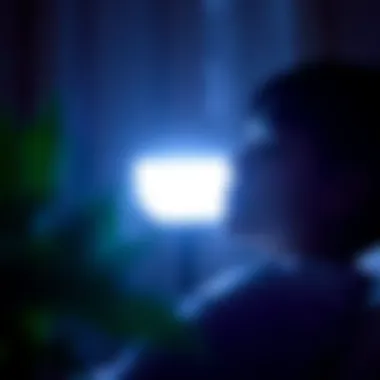
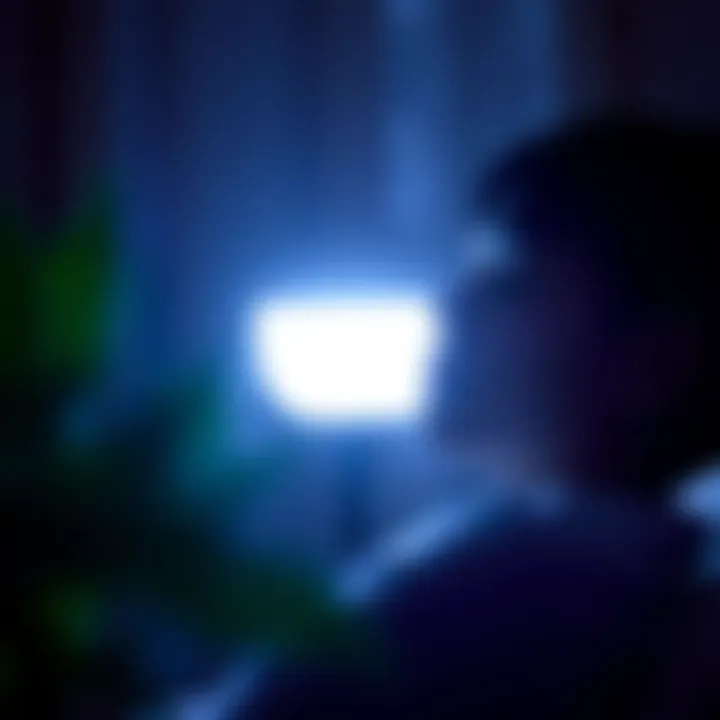
Applications of Lamp Treatment
The applications of lamp treatment bring to light an innovative approach to tackle various mental health issues. Understanding how lamp therapy can be leveraged not only highlights its versatility but also underscores its relevance in today's wellness circles. This section will delve into how this method can provide relief and elevate the well-being of individuals grappling with specific conditions like Seasonal Affective Disorder, insomnia, anxiety, and cognitive performance.
Seasonal Affective Disorder (SAD)
Seasonal Affective Disorder, or SAD, serves as a textbook example of how lamp treatment can become a lifeline for those affected by the ebb and flow of natural sunlight. Typically emerging during the darker months, SAD can lead to intense feelings of sadness, lethargy, and social withdrawal. Utilizing lamp treatment, particularly with full-spectrum or bright white lights, mimics natural sunlight, helping to ameliorate these depressive symptoms. Evidence suggests that exposure to light therapy can stimulate serotonin production, thus contributing positively to mood regulation.
Light therapy may be particularly successful when used early in the day.
"Light therapy seems to reset the body’s internal clock, leading to a positive shift in mood for those grappling with seasonal blues."
The aim here is not just about making the days brighter; it’s about creating a palpable shift in how individuals experience seasonal transitions.
Insomnia and Sleep Disorders
Many people struggle with insomnia and various sleep disorders, often finding themselves caught in an endless cycle of sleepless nights and groggy days. Lamp treatment emerges as a promising solution by enhancing melatonin production, the hormone responsible for regulating sleep-wake cycles. Timely exposure to bright light during the day can be a game-changer for those who have trouble falling asleep at night.
By tuning into the body's natural rhythms and adjusting lighting accordingly, the treatment can play a pivotal role in creating a more restful night.
- Regular Sessions: Using a light therapy lamp for 20 to 30 minutes before bedtime has shown successful outcomes for many.
- Consistency is Key: It’s crucial to maintain a consistent schedule to enhance the benefits of the therapy.
Engaging in such practices not only promotes restful sleep but may lead the way to improved cognitive functions and emotional balance during waking hours.
Depression and Anxiety Management
Lamp treatment is increasingly recognized as an adjunct in managing depression and anxiety. A two-pronged approach can be employed, wherein light therapy is utilized alongside traditional treatments like therapy or medication. The result? A more holistic method that speaks to the interconnectedness of light and mood.
The bright light stimulates brain areas considered crucial for mood regulation, and it can assist in reducing the emotional turbulence often faced by those with anxiety. In particular, studies indicate that daily exposure to bright light may reduce anxiety symptoms significantly, thus leading individuals to reclaim their day-to-day lives.
Cognitive Enhancement
Cognitive enhancement through lamp treatment offers an intriguing perspective on mental health. As cognitive demands increase in today's fast-paced world, individuals seek strategies to improve focus and creativity. Regular exposure to specific wavelengths of light can potentially sharpen alertness and bolster cognitive function.
Research is sparse, but anecdotal evidence suggests that individuals reporting increased energy levels and sharper mental acuity frequently attribute these changes to their regular lamp therapy sessions.
- Optimal Light Exposure: Targeted light therapy can support short-term memory and information retention—essential in both professional and academic settings.
- Potential for Broader Applications: Classroom settings may benefit from the implementation of light therapy, creating an engaging environment that promotes learning.
The diverse applications of lamp treatment underscore its potential to aid individuals in both emotional and cognitive dimensions. As the realm of light therapy unfolds, the possibilities for enhancing well-being become increasingly evident.
Implementing Lamp Treatment
Implementing lamp treatment effectively can play a significant role in fostering mental well-being. This section aims to demystify how to select the right equipment and follow the best practices for usage. A successful approach to lamp treatment requires an understanding of the specific lamps available, the features that matter, and how to utilize them properly for maximized benefits.
Choosing the Right Lamp
Finding the appropriate lamp for therapy is crucial. Depending on individual needs, different types of lamps cater to various conditions. A well-chosen lamp can significantly enhance one’s therapy experience and provide better results.
Types of Lamps Available
There are several types of lamps designed for light therapy, and each serves a distinct purpose. Full-spectrum lamps provide light that mimics natural sunlight, which is particularly beneficial for conditions like Seasonal Affective Disorder. On the other hand, blue light therapy lamps are often used to treat specific sleep disorders and certain types of depression.
- Full-Spectrum Lamps: Mimic sunlight, provide a balanced light spectrum. Beneficial for general mood improvement.
- Blue Light Lamps: Often smaller, focused on producing short wavelength light. Helpful for photo-therapy aimed at melatonin suppression in the morning.
- Infrared Lamps: These lamps emit long wavelengths, penetrating deeper skin layers. They may assist in muscle relaxation and reduce pain, providing yet another layer of wellness.
Each type has its pros and cons, making it essential for individuals to identify which best aligns with their emotional and physical health needs.
Important Features to Consider
When selecting a lamp, there are certain features to keep an eye out for. Brightness, light temperature, and the lamp’s size are all key factors. Brightness determines how effective a lamp will be in stimulating serotonin production, while the light temperature can affect mood and energy levels.
- Brightness (measured in lux): A lamp with higher lux ratings (around 10,000 lux) provides adequate light for therapeutic purposes, helping you feel energized.
- Light Temperature: Lamps can range from cool to warm light. Cool light may feel invigorating, whereas warm light offers a soothing effect. Offering varying options can cater to different preferences and needs.
- Portability: This factor allows therapy to be convenient. Smaller, portable models let users have therapy anytime, anywhere.
Each of these features plays a unique role in enhancing the efficacy of lamp treatment, emphasizing the need to select wisely.
Recommended Usage Guidelines
After choosing the right lamp, knowing how to use it effectively is vital for seeing positive outcomes. Specific guidelines can dictate how often and when the lamp should be used for optimal benefits.
Optimal Duration of Exposure
Duration is key in any light therapy regimen. Research indicates that sessions typically last between 20 to 30 minutes to achieve desired effects. Finding the right duration is not just about timing but also about sustaining it consistently. Daily use may yield better results than sporadic sessions. Longer sessions may lead to diminishing returns, so moderation is essential.
Timing for Effective Results
Timing matters significantly. Ideally, light therapy should be performed in the morning, especially when targeting conditions like depression or insomnia. Morning exposure helps reset circadian rhythms, improving alertness throughout the day.
- Morning Use: Best for stabilizing mood and adjusting sleep patterns.
- Evening Use: Not commonly recommended, as light exposure at night can disrupt sleep patterns.


Establishing a routine enhances the effectiveness of the therapy, making it a part of daily life.
"Identifying the right lamp and adhering to usage guidelines not only amplifies health benefits but also promotes a structured approach to mental well-being."
In intricate fashion, implementing lamp treatment can provide a pathway to enriched mental health. By choosing the right equipment and adhering to recommended practices, individuals can take charge of their well-being in a thoughtful manner. Careful consideration and structured application define the essence of successful lamp treatment.
Research and Evidence
Understanding the role of research and evidence in lamp treatment is crucial. It provides a solid foundation for the claims made about its effectiveness. By examining the studies and analyses surrounding this alternative therapy, one can gauge its credibility and applicability for mental health and wellness.
Key Studies Supporting Lamp Treatment
Clinical Trials
Clinical trials stand as a pillar in the evidence-based approach to lamp treatment. These trials often involve controlled experiments that assess the efficacy of light therapy across various populations and conditions. A hallmark of these trials is their randomized, controlled design, which minimizes bias and helps establish a clear cause-and-effect relationship. Clinical trials have identified measurable improvements in conditions like Seasonal Affective Disorder (SAD) and depression, lending credence to lamp treatment as an effective intervention. This scientific rigor is what makes clinical trials a favored choice for practitioners and researchers alike.
However, it’s worth noting that not all clinical trials undergo rigorous peer reviews or maintain transparency about their methodologies. This can sometimes skew results or overstate effectiveness.
Meta-Analyses
Meta-analyses encompass a broader scope, combining data from multiple studies to provide a comprehensive view of the effectiveness of lamp treatment. This method is particularly valuable because it allows researchers to identify trends and patterns that might not appear in isolated studies. Meta-analyses can highlight the statistical significance of outcomes and reveal a consensus among different research groups, which adds to the reliability of the findings.
A unique feature of meta-analyses is their ability to mitigate the variability found in individual studies. By pooling data, researchers can arrive at a more nuanced understanding of efficacy across diverse populations.
Nevertheless, the outcomes are only as reliable as the studies included. If the foundational studies lack quality or have conflicting results, the meta-analysis may reflect those flaws.
Limitations and Critiques
Addressing Skepticism
Skepticism often emerges as a natural response to alternative therapies like lamp treatment. Critics argue that while there are promising findings, much of the evidence remains anecdotal or inconsistent. Addressing skepticism is essential to foster a well-rounded understanding of the treatment’s validity. By acknowledging these doubts, the field can work toward demonstrating genuine efficacy through rigorous evidence and transparent research practices. Emphasizing scientific integrity is beneficial, as it reassures practitioners and clients of lamp treatment's reliability.
However, it is also a double-edged sword; excessive skepticism might hinder further research and innovation, keeping effective treatments in the shadows.
Identifying Gaps in Research
Identifying gaps in research is a key aspect when evaluating the landscape of lamp treatment. Certain populations, such as children or elderly individuals, may not be thoroughly represented in studies. Additionally, the long-term effects of light therapy haven't been extensively researched, leaving a void in knowledge about its sustainability and lasting impacts on mental health. Highlighting these gaps underscores the need for ongoing investigation and may direct future research initiatives.
While discussing gaps may initially seem discouraging, it can actually be an impetus for new research. As scientists illuminate these areas, the field can evolve and adapt, leading to a more comprehensive understanding of light therapy.
Safety and Concerns
Discussing safety and concerns in the context of lamp treatment is crucial for anyone considering this approach to enhance their mental well-being. Like any other therapeutic modality, light therapy comes with its own set of potential issues that practitioners and users need to be aware of. These concerns can range from physical discomfort to interactions with medications, which makes understanding them a fundamental aspect of ensuring a safe treatment experience. Therefore, a thorough evaluation of safety measures and guidelines should accompany any lamp treatment regimen.
Potential Side Effects
Light Sensitivity Issues
Light sensitivity issues can arise when someone undergoes lamp treatment, particularly with high-intensity lamps. People suffering from conditions such as lupus or certain eye disorders may face heightened reactions to bright light, making it critical to identify these sensitivities before starting treatment. In general, light sensitivity can lead to discomfort such as headaches or eye strain.
This characteristic is significant because those who have heightened sensitivity may need to tailor their treatment plan to avoid adverse effects. They might need to start with shorter exposure durations and gradually increase their time under the lamp, giving their body a chance to adjust. For the individuals with light sensitivities, understanding their unique biological responses can help create a safer experience while not sacrificing the benefits of light therapy.
Possible Psychotropic Interactions
Possible psychotropic interactions present another layer of concern. If a person is on medications for mental health, such as antidepressants or anxiolytics, using lamp treatment can sometimes complicate their treatment plan. Certain medications may amplify side effects from light exposure, like increased anxiety or agitation. It’s vital for users to consult their healthcare providers before beginning lamp therapy, especially for those already managing mental health conditions.
The capability of light therapy to induce shifts in mood may also interact unpredictably with existing medications. This intersection of pharmaceuticals and light therapy points to the necessity of personalized treatment approaches. Regular monitoring and communication with healthcare professionals can help navigate potential risks efficiently.
Guidelines for Safe Use
Implementing lamp treatment safely is no small feat, and following clear guidelines is essential. Here are some important tips to consider:
- Consult a Healthcare Professional: Before starting any light therapy, speak with a doctor or mental health professional to ensure it’s suitable for your particular needs and circumstances.
- Start Slow: If new to light therapy, begin with shorter exposure times and a lower intensity setting to gauge your body's response.
- Monitor Reactions: Keep track of how you feel during and after sessions. If side effects appear, consider reducing intensity or duration, or consulting a professional.
- Use Approved Devices: Ensure that the lamp being used is certified for therapeutic use. Regulatory body approval indicates adherence to safety standards.
- Follow Recommended Usage Duration: Adhere to guidelines on the optimal exposure time to maximize benefits and minimize any adverse effects.
By being mindful of these considerations, individuals can better harness the advantages of lamp treatment while minimizing potential risks. Careful attention to safety ensures that users can stay focused on what matters: improving mental health and overall well-being.
Epilogue
Lamp treatment is emerging as more than a trend in the sphere of mental health and well-being. As this article unfolds the complexities and nuances of light therapy, it becomes clear that its significance stretches beyond mere convenience—it's a potential lifeline for those grappling with psychological challenges. The integration of such treatments nourishes a holistic approach to mental well-being, aligning perfectly with the modern emphasis on natural remedies.
The Future of Lamp Treatment in Mental Health
Looking ahead, the role of lamp treatment in mental health seems promising. Research continues to pave the way for advancements in understanding how specific wavelengths of light can impact mental states. As we gradually strip away skepticism, the notion of light as a healing agent becomes less fringe and more essential. In the coming years, we might see tailored therapies that cater to individual needs, utilizing personalized light frequencies to address conditions ranging from anxiety to seasonal affective disorder. Additionally, the incorporation of technology, such as smart lamps which adjust their intensity based on user feedback, will further enhance treatment effectiveness. The landscape appears ripe for innovation and acceptance, urging a significant shift in how we perceive mental health management.
Final Thoughts on Light as a Healing Tool
Light therapy shines not just as an adjunct treatment but as a potential cornerstone in the holistic approach to psychological care. Research indicates that consistent exposure to light can make strides toward enhancing mood, regulating sleep patterns, and diminishing anxiety. It's an accessible, non-invasive method that requires minimal investment in equipment yet could yield substantial dividends in emotional health. The essence lies in tuning one’s internal rhythms and embracing light as a fundamental element of wellness.
"In the end, it's not solely about using a lamp but engaging in a transformative journey towards a more balanced mind."
As we wrap up this exploration, it's essential to foster awareness about the applications and advantages of lamp treatment. By demystifying these concepts, individuals can take informed steps towards a brighter, healthier future.
For further insights, communities such as reddit.com/r/lighttherapy provide shared experiences and guidance. Further academic insight can be gained from resources at nih.gov or ncbi.nlm.nih.gov.
The reflection on light as a healing instrument might very well be the next chapter in our collective journey towards mental health understanding and practices.















